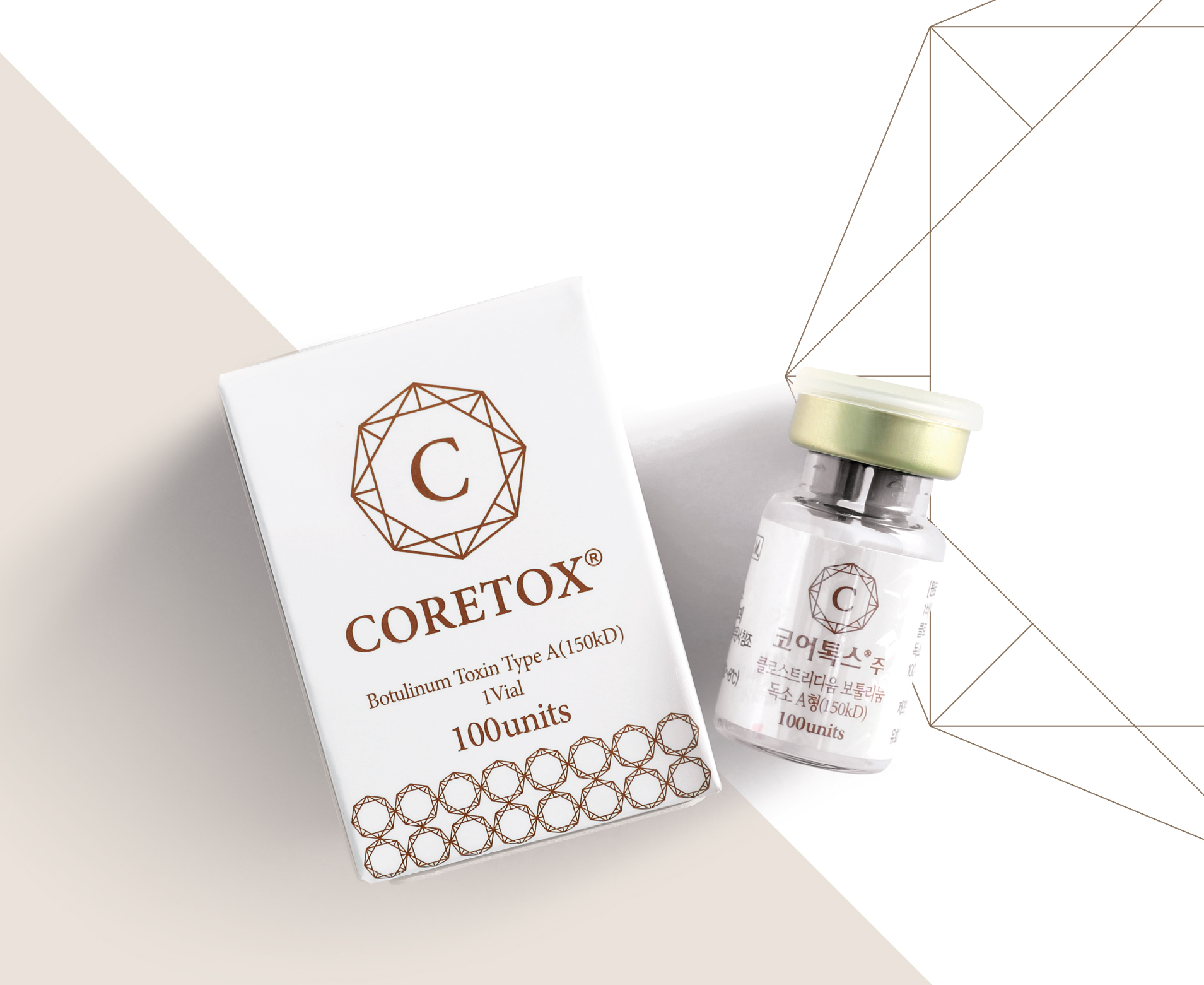Need help? Write to us support@fillersfairy.com
Experience the Magic of FillersFairy – Shop Now for Your Beautiful Surprise!
+1(912)5047648
To preserve Coretox’s efficacy, always store unopened vials upright at 2-8°C—freezing below 0°C fractures neurotoxin proteins, while temperatures above 8°C reduce potency by 20% per day. Use dedicated medical fridges with temperature alarms for stability. During reconstitution, gently swirl (don’t shake) with 1-2mL saline to prevent foam formation. Post-dilution, refrigerate and use within 24 hours, discarding if cloudy. Never expose to direct sunlight or re-freeze thawed vials, as this triggers irreversible clumping. Proper storage ensures 5-7 months of wrinkle-free results.
Table of Contents
ToggleKeep Cool, Keep Stable
Maintaining Coretox at the manufacturer’s validated 2°C to 8°C (36°F to 46°F) isn’t just a suggestion – it’s essential for predictable results. Real-world stability studies show consistent effectiveness within this range over the product’s shelf life. Deviations matter: data indicates that storage even briefly above 8°C accelerates protein breakdown. Just a few cumulative hours at typical room temperature (~25°C / 77°F) can initiate degradation measurable in lab assays. More alarming? Repeated cycles of cooling down and warming up (like frequent fridge door openings) cause significantly more damage than a single, longer exposure at a constant non-refrigerated temperature. Consistency is key.
- Target the Sweet Spot: Don’t just throw it in the fridge. Place Coretox vials in the main body of your medical refrigerator, ideally centered on a middle shelf. Avoid door shelves and drawers at the very back or front, as these areas experience the largest temperature fluctuations (often ±3°C or more) every time the door opens. Monitor with a calibrated digital thermometer. Aim for a stable 5°C ± 1°C (41°F ± 2°F) for optimal buffer.
- Understand “Brief Excursions”: Manufacturers often mention allowing “brief excursions” up to 25°C (77°F) for limited durations (e.g., up to 72 cumulative hours during transport validation). This is NOT permission for casual handling! These excursions are rigorously tested under controlled conditions for specific time windows. Each minute Coretox spends above 8°C contributes to cumulative degradation. Think of it as a limited “budget” – use it only when unavoidable (like transporting on ice packs during a clinic move), not for routine vial inspection during the day. Never expose to direct sunlight.
- Manage Fridge Door Discipline: Minimize door openings and duration. Keep your dedicated Coretox fridge strictly for medications/serums. Avoid storing beverages or frequently accessed items. Document fridge temperature daily. Significant deviations require investigating the cause immediately (e.g., compressor failure, frost build-up). Ensure sufficient air circulation around the vial – don’t jam-pack the shelf or wrap the vial tightly. Store vials upright.
- The Power of Consistency: Temperature stability within the 2°C-8°C range is as crucial as the range itself. Avoid fridges with poor temperature control or frequent auto-defrost cycles. Vials experiencing frequent small temperature fluctuations (e.g., +/- 2°C multiple times daily) suffer more cumulative denaturation than a vial maintained at a constant 8°C – data shows inconsistency itself is a destabilizing factor. Coretox is most stable when its environment is unchanging.
Core Temperature Guidelines:
| Action | Specific Target / Threshold | Reasoning / Consequence |
|---|---|---|
| Ideal Storage Temp | 2°C – 8°C (36°F – 46°F) | Validated range for long-term stability & potency. |
| Optimal Target Temp | ~5°C ± 1°C (41°F ± 2°F) | Provides buffer against minor fluctuations, maximizing consistency. |
| Absolute Max Avoidance | > 25°C (77°F) | Accelerated degradation starts rapidly. |
| ”Brief Excursion” Reality | Minimize ANY time > 8°C (46°F) | Each minute counts; cumulative exposure causes damage. |
| Primary Danger Zone | Repeated cycling above & below 8°C (46°F) | Inconsistency causes more denaturation than constant mild warmth. |
Remember: Cold chain failure is the single most common preventable cause of Coretox efficacy loss. Protect your investment and ensure patient results by mastering consistent, cool storage.
Stop Freezing Your Coretox
It might seem logical to put Coretox in the freezer “just to be extra safe,” but this is actually one of the fastest ways to ruin it. Unlike vaccines that require freezing, neurotoxins like Coretox are validated only for refrigeration. Why? Freezing causes irreversible physical damage. At temperatures below 0°C (32°F), the liquid solution expands during ice crystal formation. This physically shears and denatures the delicate protein structure critical for its function. Crucially, this damage isn’t always visible. A vial thawed from freezing might look perfectly clear, yet lab potency assays often reveal >70% potency loss. Even partial freezing during transport or near freezer vents in your fridge carries significant risk.
Know Your Fridge’s Danger Zones: Your medical refrigerator likely has cold spots. Areas near the back wall, bottom shelf, or internal vents often drop 2-5°C colder than the setpoint. Place Coretox vials only on middle shelves, away from walls and vents. Use a calibrated min/max thermometer placed where your Coretox is stored to record overnight lows for at least 3 consecutive days. If recorded lows approach or dip below 1°C (33.8°F), recalibrate your fridge thermostat or relocate the vials immediately. Frost buildup inside your fridge significantly increases freezing risk – defrost regularly.
Understand the “Near-Freeze” Zone: Significant degradation can occur long before ice is visible. Studies show protein aggregation starts when Coretox solutions experience temperatures < 2°C (35.6°F) for sustained periods. Exposure to temperatures between 0°C to 2°C (32°F to 35.6°F) for > 24 hours often causes 30-50% potency loss, measurable via bioactivity assays, even without visible ice crystals. The common advice “only don’t let it freeze solid” is dangerously incomplete.
The Transport & Thawing Double Threat: Special care is needed during transport to your clinic. Ensure ice packs are gel-based “cool packs” designed to maintain 2-8°C, NOT frozen ice bricks. Frozen packs placed directly against vials can cause localized freezing in minutes. If using a cooler, place vials in an insulated secondary container (like a foam vial holder) within the cooler, surrounded by cool packs, never touching them directly. Thawing previously frozen Coretox does not restore potency – the damage is permanent at a molecular level. Once frozen, it’s compromised.
When Freezing Happens (Accidentally): Don’t Gamble. If a vial was exposed to temperatures < 0°C (32°F) for any duration, or shows any sign of cloudiness, opalescence, or visible crystals (even partial), discard it immediately. Do not try to salvage it by thawing and using it. The efficacy is unknown and likely poor, posing both medical and liability risks. Record the incident and batch number for supplier notification and disposal documentation.
Core Freezing Risks & Realities:
| Situation | Specific Temperature & Time Risk | Likely Potency Impact & Action |
|---|---|---|
| ”Safe” Storage Zone | Steady 2°C – 8°C (36°F – 46°F) | Validated Stability (Minimal Degradation) |
| ”Near-Freeze” Degradation Starts | Below 2°C (35.6°F) sustained hours | Gradual Loss (Starts at ~10-20%) |
| Significant Damage Threshold | 0°C – 2°C (32°F – 35.6°F) >24hrs | High Loss (30-50%+), Discard (Even if liquid) |
| Partial Freezing (Crystals Forming) | Below 0°C (32°F) for minutes/hours | Severe & Irreversible Damage (70%+ Loss), Discard |
| Full Freezing (Solid Ice) | Below -1°C (30°F) for sustained time | Total Compromise (>90% Loss), Discard |
| Thawing After Freezing | Any exposure below 0°C (32°F) | Permanent Damage – Potency NOT Recovered. Discard. |
Remember: Freezing Coretox destroys its therapeutic value through physical protein damage. Protect your investment by ensuring consistent refrigeration above freezing, not below. Vigilance against cold spots in your fridge and improper transport methods is non-negotiable. When in doubt about a possible freeze event, err on the side of patient safety and product integrity – discard the vial.
Gentle Handling Matters
Coretox isn’t just sensitive to temperature; it’s also susceptible to physical stress. The botulinum toxin protein complex is a large, delicate structure. Studies using analytical methods like size-exclusion chromatography show that vigorous shaking or repeated forceful drops – even from just a few inches onto a hard counter – can cause measurable aggregation and fragmentation (around 5-15% initial degradation after just one significant shock). Aggregated proteins lose potency and increase the risk of immunogenicity. This fragility extends beyond transport to daily handling: how you reconstitute the powder and draw doses significantly impacts its final quality. Rough treatment here negates perfect cold storage.
Transport Isn’t Just About Temperature. Shipping Coretox relies on validated containers with suspension systems or thick conforming foam designed to absorb shocks exceeding > 20G of force – the kind encountered during routine air travel baggage handling or truck vibrations. Generic insulated boxes filled with flimsy bubble wrap aren’t sufficient. On receipt, inspect the box for signs of severe impact damage. Before signing, quickly note the temperature indicator inside the package next to the vial(s). If it shows excursion beyond limits or the vial appears cracked or leaking, document and refuse/return it immediately per protocol. Always open the insulated shipping container and inspect the vials inside your climate-controlled medical storage area – don’t let them sit exposed on a receiving dock.
The Art of Reconstitution. Reconstitution is where gentle handling becomes critical science. Always use the recommended diluent (typically sterile preservative-free saline) and volume. Reconstitute by injecting the diluent slowly down the inner wall of the vial. Avoid jetting the diluent stream directly onto the powder cake – this creates turbulence, shear forces, and localized foaming that denatures proteins. The goal is minimal bubbling. Do NOT shake the vial. Instead, roll the vial very gently between your fingers for about 30-60 seconds until the solution is clear.
“Think of it like dissolving fine sugar in tea – you swirl gently, don’t whip it with a fork.”
Forcefully tapping the vial bottom on a hard surface to dislodge powder residue is another common mistake that introduces damaging micro-shocks. Patience is key; let the powder hydrate naturally with gentle rolling, even if it takes slightly longer. Use immediately if possible, or store the reconstituted vial upright in the refrigerator for the validated timeframe (usually ≤ 24 hours).
Drawing Doses Demands Delicacy. When drawing Coretox into syringes, use low-protein-binding syringes whenever possible. Use a blunt fill needle (to minimize coring rubber stopper fragments). Insert the needle bevel-up near the stopper’s edge to avoid coring. Draw the solution slowly and smoothly – rapid, jerky plunger pulls create significant negative pressure, causing foaming and shear stress within the syringe or needle hub. Ensure you see continuous liquid flow without large bubbles suddenly collapsing. Small air bubbles are generally unavoidable but minimize them. If using the same reconstituted vial for multiple patients, clean the stopper with 70% isopropyl alcohol thoroughly before each entry and use a new sterile needle each time to prevent contamination and maintain sterility.
Storage & Movement After Reconstitution. Store the upright, reconstituted vial in the dedicated med fridge on a middle shelf. Avoid repeatedly taking it out to draw partial doses and putting it back. Each temperature cycle and handling event risks degradation and contamination. Movement matters: carry reconstituted vials and syringes carefully on a tray. Dropping a loaded syringe wastes the entire dose and creates a potential biohazard risk. Avoid vigorous agitation during transport within the clinic – even short trips across the clinic need a steady hand or cushioned carrier.
Recognizing Visible Degradation Signs. While not all degradation is visible, there are critical signs that mandate disposal:
“If the reconstituted solution develops persistent cloudiness, significant flocculent material, a thickened/viscous texture, or unusually large foaming that won’t dissipate – stop. Discard it immediately. These are visual indicators of significant protein damage or contamination.”
Trying to “fix” this by further dilution or filtering is ineffective and unsafe. Trust visual cues when combined with knowledge of possible rough handling. Gentle practices from the moment the vial arrives to the final injection ensure the potent, consistent performance both your practice and your patients expect.








